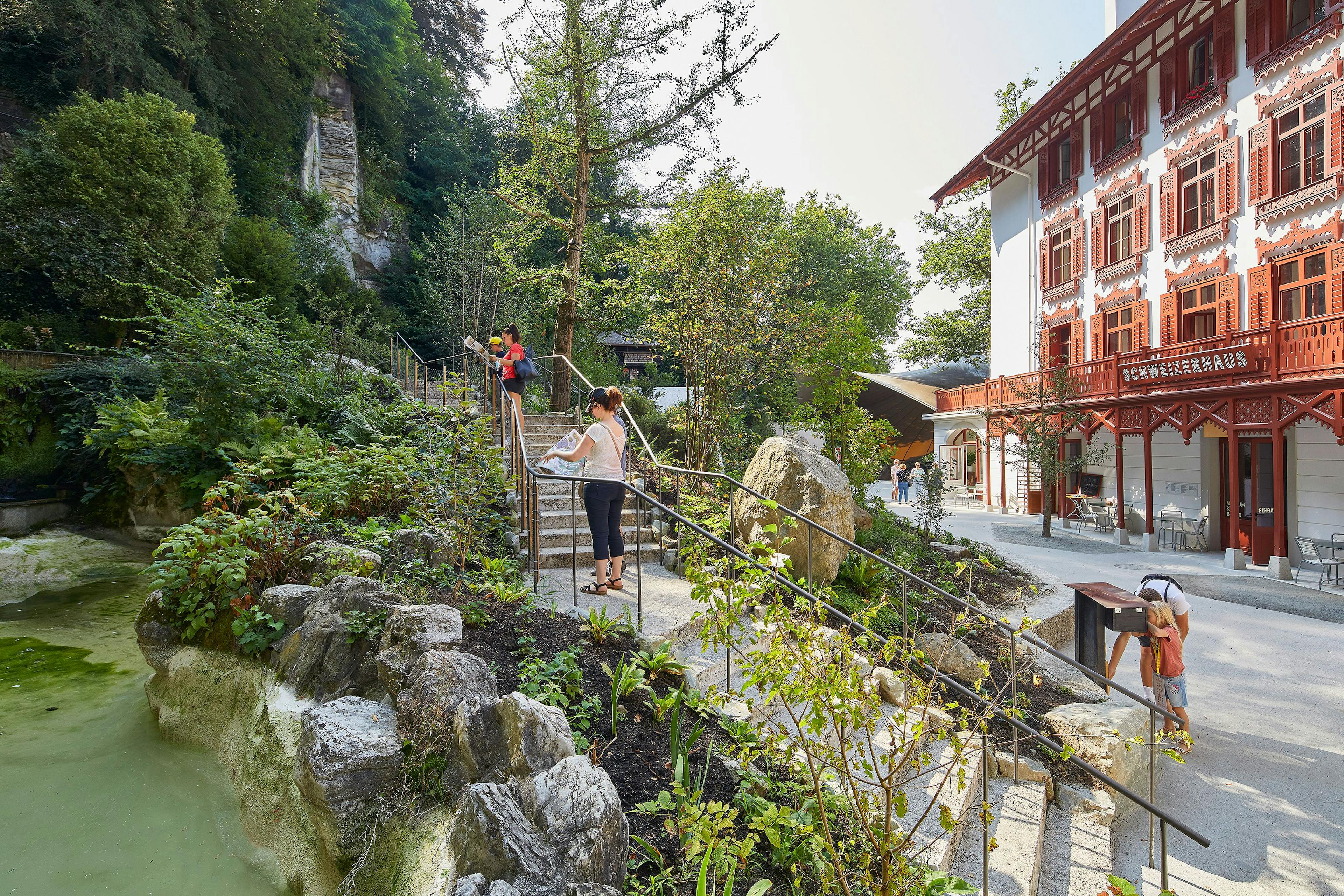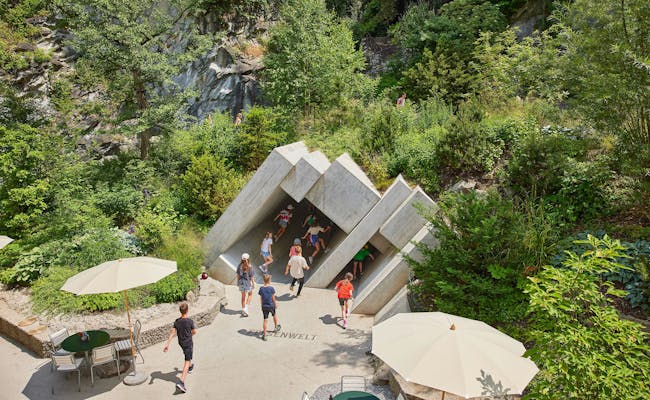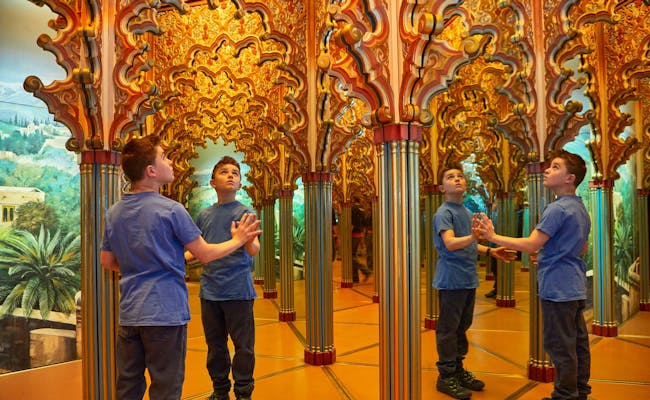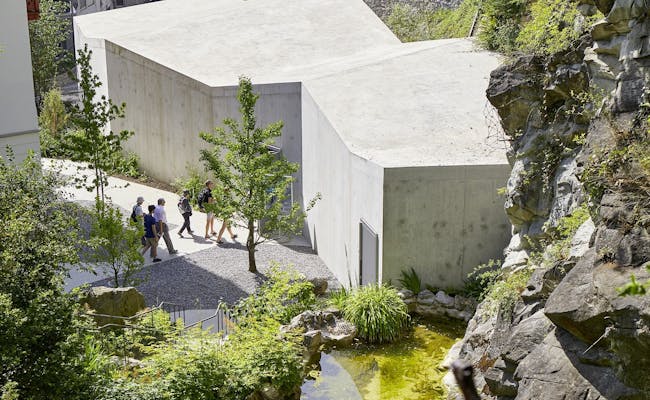
Ticket
Ticket Glacier Garden Lucerne
booked 135 times

1 Activities
Filter
Better than 4.5 stars
Better than 4 stars
Better than 3.5 stars
Better than 3 stars
No Rating


When a wine cellar was to be built here in 1872, workers discovered 16 glacial pots that were formed during the Ice Age 20,000 years ago. Accordingly, the planned wine cellar was quickly transformed into a glacier garden.
At the Glacier Garden, you can look forward to diverse experiences and information. You can borrow an audio guide that will take you through the Glacier Garden for about an hour.
Specifically, you can discover the following here:
Additionally, there is a treasure hunt game for families with children for a deposit of 2 CHF.
This rock world takes you on a journey through time and shows you the history of Lucerne sandstone. Elaborate animations and projections bring the fascinating moods of the different epochs to life. From the fossilized marine beaches to the folding of the Alps to the present day. Each room tells a unique story.
In the rock chambers, the stone narrates the geological development of the sandstone, which used to lie at a subtropical beach before the Ice Age. The elaborate animation is complemented by lighting, sound, and tactile elements.
At the end of the experience path, you will find an elevator that takes you up to the Summer Meadow. From here, you have an excellent view of the Alps. However, you can also take the stairs. 🙂


The Alpine Park was created towards the end of the 19th century when the Glacier Garden was laid out. The Sommerau is the perfect complement to the historic park of the Alpenpark. There is an 11 m high wooden observation tower, the oldest in Switzerland. It is a listed building.
The Alpine Park itself can be accessed via a narrow path. It takes about 20-30 minutes to walk it completely. Along the way, you will find information boards that tell you more about the alpine plants and the ecological importance of this habitat. You will find many fern species in the Alpine Park. The fern is a plant that was already found here in Lucerne in prehistoric times.
There is also a reconstructed rock landscape that is typical of the Swiss Alps. Here you can admire the rock formations and plants found at higher altitudes. You will find a variety of alpine plants along the way. You will see edelweiss, gentian and many other flowers.
Built in 1896, the diorama was set up for tourists in the city to give them an ersatz mountain experience. In a "fake" SAC hut, you have a view of a "fake" glacier. Your gaze falls on a painting of the Breithorn and a model of the Gorner Glacier near Zermatt.
The glacier potholes were the reason for the creation of the Glacier Garden in the middle of Lucerne at the end of the 19th century. They are very impressive, as they bear witness to the immense power of the ice. In order to protect the natural monument from air pollution and weathering, it has been protected by a tent roof since 1980.
The whole of Lucerne lay under a thick layer of ice 20,000 years ago. It is generally assumed that the inland ice in this region was around 2000 to 3000 m thick.
But it's not just the glacier pots that are exciting, the fossilized shells and palm leaves also shed light on a bygone era when the Lucerne region was lined with subtropical seashores.


The sandstone pavilion is not a building in the true sense of the word. It is an inverted rock and was built half from Lucerne sandstone. Most of the material was obtained as demolition material from the rock world.
Every 20 minutes, a 13-minute film about the history of Central Switzerland's climate, geology and tourism is shown in the pavilion. there are 20 seats available. An exhibition room shows changing special exhibitions.
An absolute highlight of the Glacier Garden is the famous mirror labyrinth. With more than 50 mirrors, it causes absolute confusion and makes the paths seem endless. You slowly feel your way through the corridors and encounter your own reflection again and again.
The labyrinth was built in 1896 for the Swiss National Exhibition in Geneva and is a replica of the fabulous Alhambra Palace in Granada in southern Spain. You can play with mirror experiments and distorting mirrors and be amazed by the illusions.


There are many interesting things to see and experience in the Swiss House in the Lucerne Glacier Garden. Everything was collected by the Amrein family. Most of the objects date from the 19th century, although some are older. The numerous historical landscape reliefs are a particular specialty.
Here are just some of the rooms and areas you can visit:
| area or room | contents / places of interest |
|---|---|
| Entrance area | Information about the history of the Glacier Garden and the Schweizerhaus itself |
| Mineral room | impressive collection of minerals and rocks from the surrounding area |
| Crystal cellar | giant rock crystals and other crystal formations with special lighting |
| Fossil gallery | fossilized remains of creatures that existed in the region millions of years ago |
| Säntis Room | an impressive panoramic picture of the Säntis and the surrounding mountains |
| Glacier Salon | Glacier relief by the famous alpine geologist Albert Heim, a friend of the family |
The Schweizerhaus also has a viewing terrace from which you can enjoy a spectacular view of the city of Lucerne and the surrounding mountains.


Regional snacks are available in the Bistro Salwideli. It was rebuilt in 2020. The overall architectural concept of the listed building was respected.
In the museum's souvenir store, you will find a variety of memorabilia and gifts to take home with you.
The Glacier Garden is located in the center of Lucerne, near the famous Lion Monument.
From Zurich, it takes about 40 to 50 minutes by train to reach Lucerne station. There, you can take bus line 1 to Wesemlinrain (4 stops). Alternatively, you can walk via the Chapel Bridge, which takes about 20 minutes.
If you drive from Zurich, it takes around 40 minutes. You can park in one of the nearby parking garages, City-Parking or Löwen Center, which are only a 3-5 minute walk away.
The Glacier Garden in Lucerne is open daily throughout the year. The alpine park within the Glacier Garden is not only very educational but also a great place to relax. You can enjoy the alpine nature right in the city and learn more about the formation and changes of the Alps.

